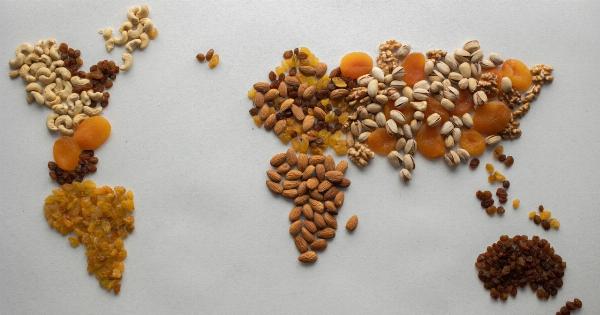If you’re looking to improve your overall health or manage a specific health condition, one of the best things you can do is to eat a healthy diet.
A nutritious and well-balanced diet can help you maintain a healthy weight, boost your immune system, and even reduce the risk of certain diseases. But with so many different diets and food options out there, it can be tough to know where to start. That’s why we’ve put together this ultimate guide to eating healthy worldwide.
1. The Mediterranean Diet
One of the most popular and well-known diets for healthy eating is the Mediterranean diet. This diet is based on the traditional foods and lifestyles of people who live in the Mediterranean region.
The Mediterranean diet is rich in fruits, vegetables, whole grains, nuts, seeds, and healthy fats, such as olive oil. Fish and seafood are also a common source of protein.
The Mediterranean diet has been shown to reduce the risk of heart disease, stroke, and other chronic conditions.
It’s also a relatively easy diet to follow, as it doesn’t require extreme calorie restriction or the elimination of entire food groups.
2. The Japanese Diet
Another healthy diet that has gained popularity in recent years is the Japanese diet. This diet is based on the foods and eating habits of the Japanese people and is known for its emphasis on fresh, nutritious ingredients and smaller portion sizes.
The Japanese diet typically includes plenty of fish and seafood, soybeans, vegetables, and rice. Green tea is also a common beverage. The Japanese diet has been shown to reduce the risk of heart disease, stroke, and certain types of cancer.
3. The Plant-Based Diet
A plant-based diet is one of the healthiest diets worldwide. It is focused on consuming mostly plant-based foods, including fruits, vegetables, whole grains, legumes, nuts, and seeds.
The diet may also include small amounts of animal products, such as lean meats, fish, or dairy.
The plant-based diet has been shown to reduce the risk of heart disease, high blood pressure, type 2 diabetes, and certain types of cancer. It is also beneficial for weight management and can improve overall health and well-being.
4. The DASH Diet
The DASH (Dietary Approaches to Stop Hypertension) diet is a popular diet for people with high blood pressure or hypertension.
It is focused on reducing sodium, saturated fat, and cholesterol intake while increasing the consumption of fruits, vegetables, whole grains, and lean protein sources.
The DASH diet has been shown to reduce blood pressure, improve heart health, and lower the risk of certain diseases, such as stroke and kidney disease.
5. The Gluten-Free Diet
The gluten-free diet involves avoiding foods that contain gluten, which is a protein found in wheat, barley, and rye. This diet is not just for people with celiac disease, but also for those with gluten sensitivities or allergies.
Gluten-free foods typically include fresh fruits and vegetables, lean protein sources, and gluten-free grains like quinoa and brown rice.
Many processed foods, including certain types of bread, pasta, and baked goods, contain gluten and should be avoided on this diet.
6. The Paleo Diet
The Paleo diet, also known as the “caveman” diet, involves eating foods that were available to humans during the Paleolithic era.
This means eating plenty of lean meats, fish, fruits, and vegetables while avoiding processed foods and grains.
The Paleo diet has been shown to improve overall health and reduce the risk of chronic diseases such as heart disease and diabetes. However, some experts note that cutting out entire food groups, such as grains, may lead to nutritional deficiencies.
7. The Whole30 Diet
The Whole30 diet is a 30-day program that involves eating only whole foods and avoiding processed foods, sugar, alcohol, and grains. The goal of this diet is to reset the body and improve gut health.
While the Whole30 diet may lead to weight loss and improved energy levels, it can be challenging to follow and may lead to nutrient deficiencies if followed long-term.
8. The Raw Food Diet
The raw food diet involves eating only raw, uncooked foods. This can include fruits, vegetables, nuts, seeds, and sprouted grains.
Proponents of the raw food diet believe that cooking foods destroys important nutrients and enzymes that are essential for good health.
While the raw food diet may lead to weight loss and improved digestion, it can also be difficult to get all of the necessary nutrients from raw foods alone. It’s important to speak with a dietitian before starting this diet.
9. The Flexitarian Diet
The flexitarian diet is a flexible and sustainable approach to healthy eating that involves consuming mostly plant-based foods while allowing for occasional meat consumption.
This diet is focused on reducing meat intake for health and environmental reasons.
Studies have shown that the flexitarian diet can help lower the risk of chronic diseases, such as heart disease and certain types of cancer, as well as reduce greenhouse gas emissions.
10. The Keto Diet
The keto diet is a high-fat, low-carbohydrate diet that has gained popularity in recent years. This diet involves consuming large amounts of healthy fats, such as those found in avocados and nuts, while severely limiting carbohydrate intake.
The keto diet has been shown to lead to weight loss and improved blood sugar control in people with diabetes. However, this diet can be difficult to follow and may increase the risk of nutrient deficiencies if not followed properly.
Conclusion
There are many different diets and eating patterns that can promote good health and reduce the risk of chronic diseases.
While there is no one-size-fits-all approach to healthy eating, incorporating more whole foods, vegetables, and lean proteins into your diet is a good place to start.
Remember to speak with a healthcare professional or registered dietitian before starting any new diet or making significant changes to your current eating habits.
And don’t forget that the key to healthy eating is moderation and balance, not deprivation or extreme restriction.

























